Manual telescope tracking mounts outperform camera tripods because they counteract Earth's rotation, preventing stars from streaking across your images during long exposures. While tripods leave you limited to 20-30 second shots before stars blur, manual equatorial mounts let you track celestial objects precisely, capturing sharper details and fainter objects with lower ISO settings. You'll enjoy extended exposure times, reduced noise, and greater portability with these purpose-built systems. Discover how these tracking benefits translate to dramatically improved astrophotography results.
The Crucial Role of Precise Movement in Long Exposure Imaging

When capturing the night sky through long exposure photography, precise movement becomes the difference between stunning celestial portraits and disappointing blurs.
Manual telescope tracking systems provide the crisp, consistent motion you need to avoid star smearing and capture perfect star trails.
Unlike basic camera mounts, manual tracking accounts for Earth's rotation, allowing you to achieve smoother trajectories in your images. The mechanical notion of time is elegantly revealed as the Earth rotates during these extended exposures. The high-precision motors deliver reliable movement throughout your exposure time, eliminating the inconsistencies that ruin celestial photography.
You'll find it's possible to extend your exposure times considerably, capturing fainter objects without sacrificing clarity.
Earth's Rotation: Why Basic Camera Tripods Fall Short
Earth's rotation causes stars to drift 15 degrees westward each hour, making your standard camera tripod inadequate for astrophotography beyond a few seconds.
You'll notice unsightly star trails in longer exposures as your static tripod can't compensate for our planet's constant motion. This creates visible field rotation that becomes increasingly pronounced at the edges of your frame.
To capture sharp stellar images, you'll need precision tracking that moves opposite to Earth's rotation, allowing exposures of two minutes or more without blurring.
Earth's Rotation Challenge
As our planet rotates on its axis every 23 hours and 56 minutes, it creates a fundamental challenge for astrophotographers using basic camera equipment. Your tripod-mounted camera remains stationary while stars appear to move westward across the sky, resulting in blurred streaks instead of sharp points of light. The NPF/500 rule helps photographers calculate maximum exposure times before star trails become visible in untracked images.
| Exposure Time | Basic Mount Result | Manual Tracking Result |
|---|---|---|
| 5 seconds | Slight star trails | Sharp star points |
| 30 seconds | Obvious trails | Clear nebula details |
| 2+ minutes | Star circles | Deep space objects |
You'll find this effect becomes more pronounced with longer focal lengths. While wide-angle lenses might let you get away with exposures of a few seconds, telephoto lenses will show movement almost immediately. This fundamental limitation prevents you from capturing the faint details that make astrophotography so rewarding.
Tripods Cause Star Trails
Basic camera tripods represent the entry point for most astrophotographers, but they introduce a fundamental problem for night sky imaging. Your stationary tripod can't compensate for Earth's rotation, which causes stars to appear as curved streaks in long-exposure photos.
When you're capturing the night sky, Earth rotates approximately 15 degrees per hour, moving celestial objects across your frame. In the Northern Hemisphere, you'll notice concentric arcs forming around Polaris, while Southern Hemisphere photographers see similar patterns around the south celestial pole. Typical shutter speeds for capturing these star trails range from 15 minutes to several hours, depending on your desired effect.
While basic tripods provide stability, they lack the precision tracking capabilities of equatorial mounts. These specialized telescope mounts include clock-drive mechanisms that rotate at exactly the same rate as Earth, keeping stars fixed in your frame.
Without this compensation, your long exposures will inevitably produce star trails instead of pinpoint stars.
Precision Tracking Matters
While tracking stars with a basic tripod works for short exposures, the challenges multiply dramatically when attempting longer astrophotography sessions. Earth's rotation causes stars to drift across your frame, resulting in blurred images or star trails when they're not wanted.
Dedicated tracking mounts, particularly equatorial mounts, are designed specifically to counteract this rotation. Unlike static camera tripods, these mounts rotate at precisely the same rate as Earth but in the opposite direction. This precision allows you to maintain focus on celestial objects for extended periods. Equatorial mounts position their first axis parallel to Earth's rotational axis, placing the instrumental pole at an optimal position between horizon and zenith.
With proper tracking, you'll capture clearer images with considerably less digital noise. You can lower your ISO settings and increase exposure times, revealing faint details invisible in quick snapshots.
The difference between tracked and untracked astrophotography isn't subtle—it's transformative.
Essential Features of Manual Tracking Mounts for Beginners
The right manual tracking mount can make all the difference for beginners venturing into astronomy. These mounts combine simplicity with functionality, allowing you to focus on the stars rather than complex technology.
Manual tracking mounts: where simplicity meets functionality, letting beginners connect with the stars without technological distractions.
You'll appreciate the lightweight design and portability, perfect for exploring different observation sites as you develop your skills. These manual equatorial mounts are specifically designed for tracking celestial objects as they move across the night sky.
- Simple mechanics require minimal technical knowledge while providing hands-on experience with celestial mechanics
- Fine-tuning knobs allow precise adjustments without digital interfaces, helping you develop fundamental tracking skills
- Versatile applications support both visual observation and basic astrophotography as you progress
Manual mounts also foster deeper understanding of celestial movements through direct interaction, building a strong foundation before you invest in more sophisticated equipment.
Their accuracy and stability are sufficient for most beginner and intermediate astronomical pursuits.
Cost-Benefit Analysis: Manual Equatorial Mounts vs. Camera Tripods
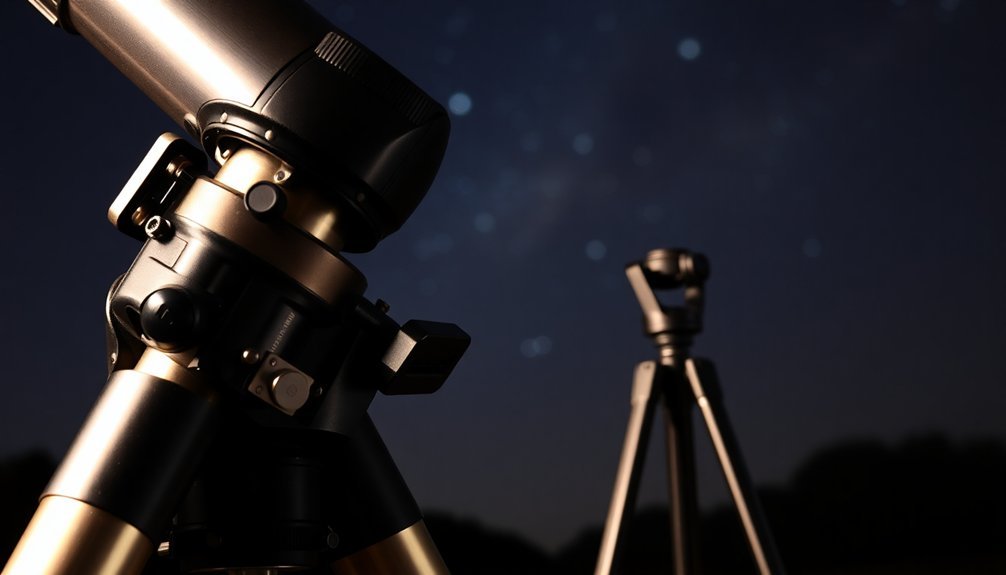
While you'll pay more upfront for a manual equatorial mount than a camera tripod, this investment delivers superior tracking precision that can greatly improve your astrophotography results.
The equatorial mount's specialized design allows for accurate celestial object tracking, eliminating field rotation issues that plague standard camera setups when attempting long exposures. Unlike Alt-Az mounts, equatorial mounts feature dual axis control for precise adjustment of both Right Ascension and Declination.
Your investment also maintains value over time through upgrade potential, as many mounts can be enhanced with motors or computerized systems as your skills advance.
Price vs. Performance
Choosing between manual equatorial mounts and camera tripods involves a critical trade-off between investment and capability. While you'll pay more upfront for a manual equatorial mount, the performance advantage for astronomical observation and photography is substantial.
These mounts offer precise celestial tracking aligned with Earth's axis—something simple camera mounts simply can't match. The ability to precisely align with the north celestial pole ensures accurate tracking of celestial objects throughout your observation session.
- Long-term value: Equatorial mounts support heavier telescopes and provide the durability needed for years of astronomical pursuits.
- Tracking precision: The two-axis design allows continuous star tracking for long-exposure astrophotography that camera tripods can't achieve.
- Versatility: You can use equatorial mounts for both visual observation and sophisticated deep-sky photography, eliminating the need for multiple equipment purchases.
Long-term Investment Considerations
When considering astronomy equipment as a long-term investment, manual equatorial mounts greatly outperform camera tripods in overall value retention and functionality. They're built with durability in mind, using robust mechanical components that withstand years of use with minimal maintenance. Manual equatorial mounts allow for much more accurate deep-sky observations when properly polar aligned compared to standard camera tripods.
| Investment Factor | Manual Equatorial Mount | Camera Tripod |
|---|---|---|
| Longevity | 10+ years with care | 3-5 years typically |
| Upgradability | Motors, autoguiding | Limited options |
| Value Retention | High resale value | Depreciates quickly |
You'll find your equatorial mount provides a clear upgrade path as your skills develop. Start with manual tracking, then add motorization or autoguiding when ready. Unlike camera tripods, these mounts maintain their value over time and offer adaptability across different telescopes and observational objectives, making them the smarter long-term astronomy investment.
Achieving Sidereal Tracking Rates With Budget Equipment
For many amateur astronomers, the pursuit of quality astrophotography doesn't have to break the bank. You can achieve functional sidereal tracking rates using creative, cost-effective solutions that rival more expensive setups.
Budget mounts like the AZ-GTi offer built-in tracking capabilities that can be enhanced with open-source software. By making simple DIY modifications to existing equipment, you'll improve tracking performance substantially without significant investment. The Earth rotates once every 23.93447 hours, necessitating precise tracking to keep stars in view.
Transform your entry-level mount into a star-tracking powerhouse with simple DIY tweaks and free software solutions.
Even smartphone apps can control makeshift mounts to achieve better tracking rates.
- Manual adjustments with frequent position checks work surprisingly well for shorter exposure times
- Open-source software solutions eliminate the need for expensive proprietary programs
- DIY modifications to budget mounts can dramatically improve tracking precision
With patience and ingenuity, you'll find that achieving acceptable sidereal tracking doesn't require astronomical spending.
Practical Field Techniques for Manual Mount Adjustments

Mastering manual mount adjustments requires both technical knowledge and hands-on practice in the field. To efficiently track celestial objects, you'll need to loosen the RA and DEC clutch knobs, allowing for smooth manual adjustments without completely disengaging the gears. Turn these knobs counterclockwise to loosen, clockwise to secure. The Skywatcher EQ6-R Pro mount offers exceptional precision for manual tracking compared to simpler camera mounts.
| Adjustment Type | Technique | When to Use |
|---|---|---|
| Coarse Tracking | Partially loosen clutches | Initial object location |
| Fine Tracking | Minimal clutch loosening | During observation |
| Balance Tuning | Counterweight adjustment | Before starting session |
Ensure your mount is properly balanced with a slight east-heavy bias for better tracking. Position your dovetail locking knobs on the east side during polar alignment, and continually fine-tune your altitude and azimuth settings throughout your session for ideal stability and tracking performance.
Upgrading Paths: From Basic Manual Mounts to Enhanced Tracking
As your astrophotography skills develop, you'll likely find that basic manual mounts limit what you can capture in the night sky.
Upgrading to enhanced tracking systems offers substantial benefits, from longer possible exposure times to sharper final images without star trails.
When considering your upgrade path, focus on these key components:
- Mount type selection – Equatorial mounts provide smoother tracking for astrophotography compared to alt-azimuth designs.
- Guiding capability – Adding guidescopes or off-axis guiders with auto-guiding software like PHD2 dramatically improves tracking precision.
- Payload capacity – Verify your new mount can support your telescope plus all accessories with room for future additions.
The right mount upgrade will immediately expand your focal length options and allow you to capture more detailed images of galaxies, nebulae, and other deep-sky objects. Remember that longer focal lengths necessitate more precise tracking to avoid visible image trails in your astrophotography.
Frequently Asked Questions
Can Manual Tracking Work for Planetary Imaging?
Yes, you can use manual tracking for planetary imaging with short exposures and steady hands. You'll need to stack multiple frames afterward to create high-quality images despite the challenges of Earth's rotation.
How Does Polar Alignment Differ Between Hemispheres?
In the Northern Hemisphere, you'll align to Polaris, which is bright and close to the pole. In the Southern Hemisphere, you'll use dimmer Sigma Octantis, making alignment more challenging but using similar techniques.
What Maintenance Do Manual Tracking Mounts Require?
You'll need to regularly check and tighten bolts, lubricate gears with Super Lube, clean dust from moving parts, and inspect for wear. Don't forget periodic alignment checks to maintain smooth tracking performance.
Can Manual Tracking Be Effective for Meteor Showers?
Yes, you'll find manual tracking highly effective for meteor showers. You can quickly adjust to target the radiant point, reposition at 45-degree angles for ideal capture, and adapt immediately when activity peaks.
How Do Temperature Changes Affect Manual Tracking Accuracy?
Temperature changes cause thermal expansion in your telescope, requiring more frequent manual adjustments. You'll need to compensate for structural deformations as the night progresses, which isn't necessary with consistent temperatures. Stay vigilant while observing.
In Summary
You'll find manual telescope tracking offers the precision needed for astrophotography that simple camera mounts can't match. Even budget equatorial mounts compensate for Earth's rotation, letting you capture longer exposures with sharper detail. Start with basic manual tracking and master field adjustment techniques. When you're ready, you've got a clear upgrade path toward more sophisticated tracking systems that build on these fundamental skills.
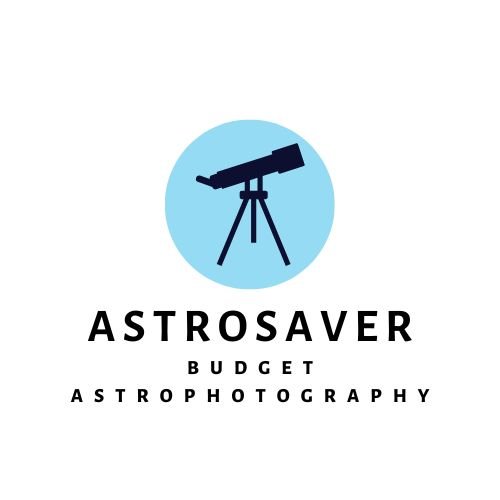
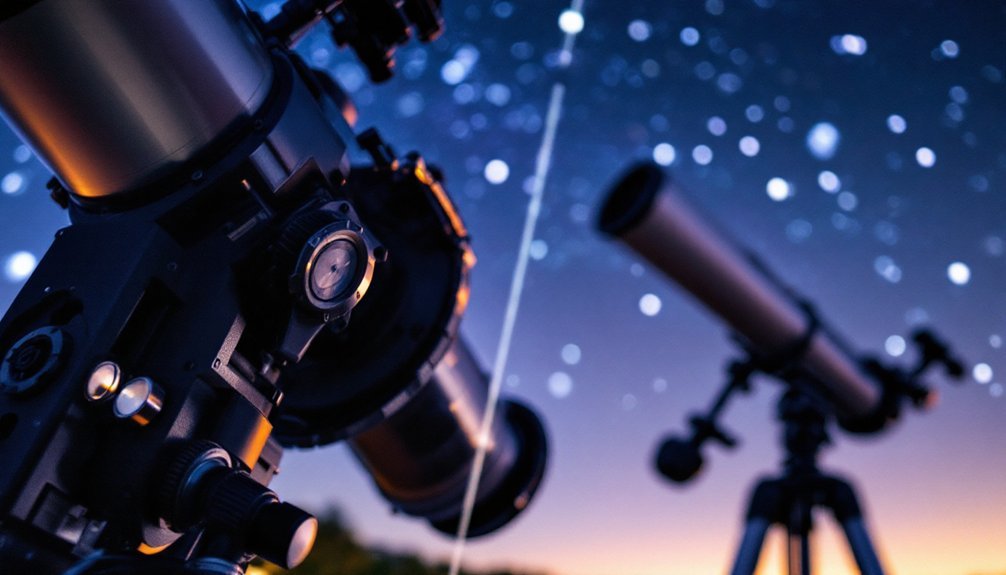
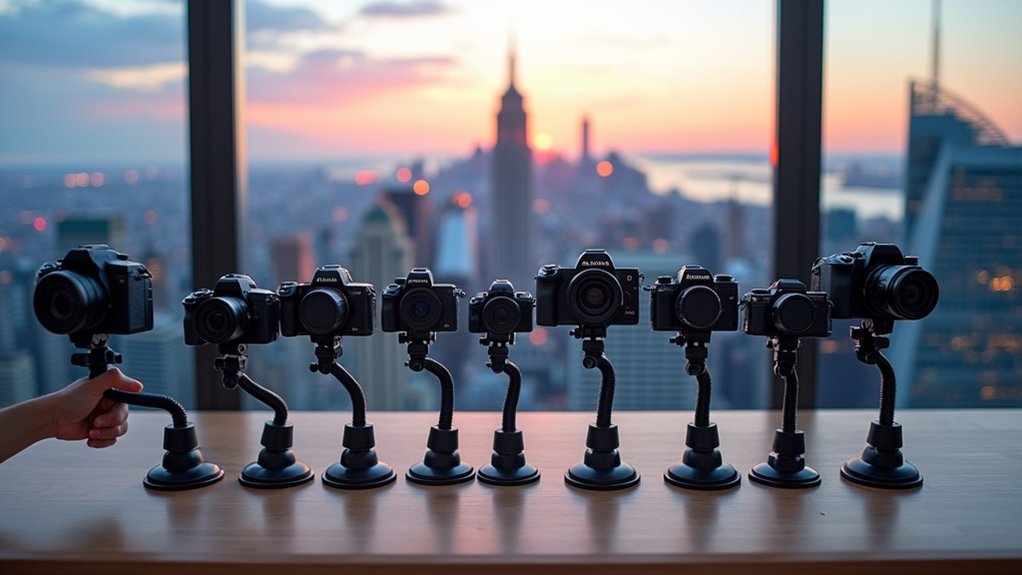
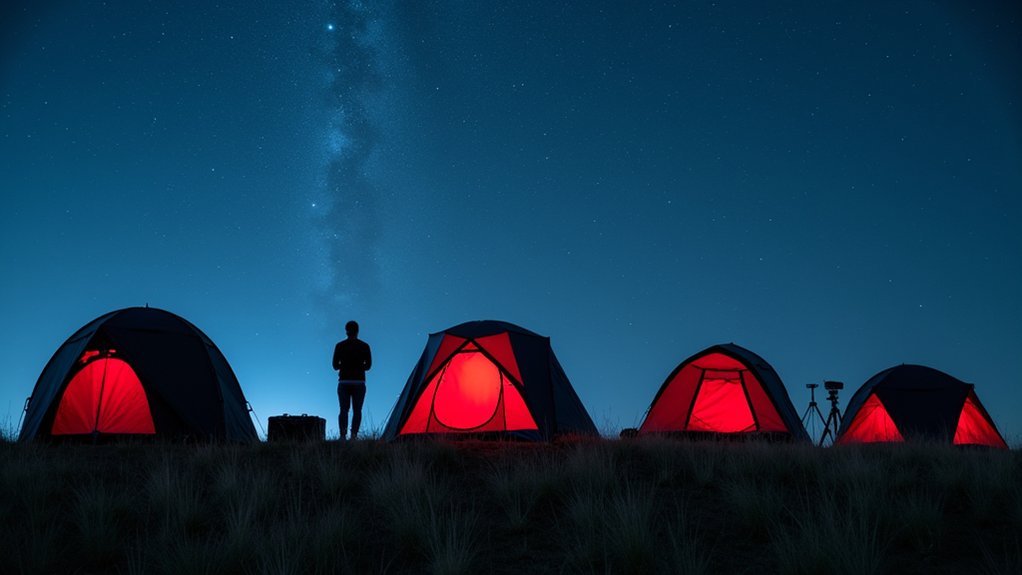
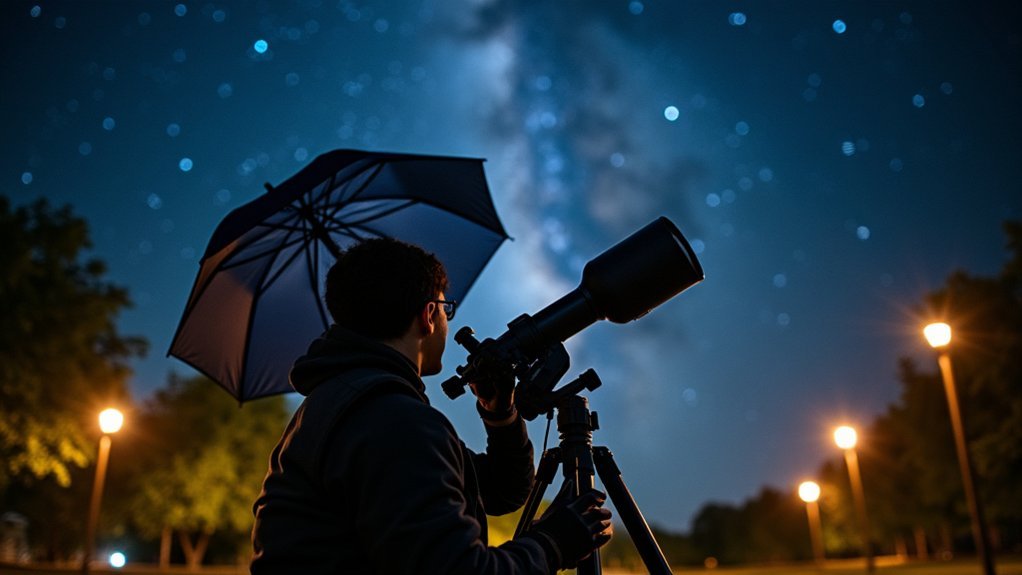
Leave a Reply